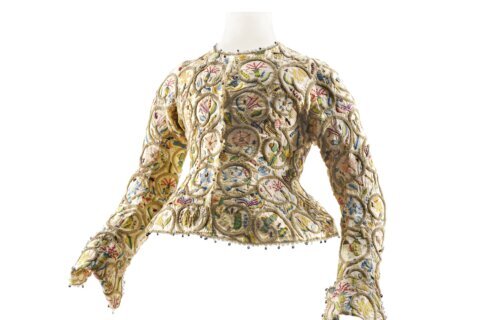A new D.C. art exhibit explores one of the more complicated and controversial topics of modern society: fast fashion and its impact on labor, trade, ethics and the environment.
“Fast Fashion/Slow Art,” opening Aug. 8 at The George Washington University Museum and The Textile Museum, looks at the overall cost of inexpensive clothing through an artistic lens by way of 11 pieces of contemporary art that detail how clothes are made, who makes them and what happens to them after they are purchased.
“There’s kind of a changing attitude toward fashion consumption that’s just been happening in the last few years,” said exhibit co-curator Bibiana Obler, an associate professor of art history at the Corcoran School of the Arts and Design at The George Washington University.
“But of course, the changes are happening every decade and the issues of sustainability, in terms of labor and the environment — these have been problems for a long time.”
The fashion industry’s excessive use of resources and contributions to pollution have been documented by environmental advocates. The United Nations Environment Program reports the industry produces 20% of global wastewater and 10% of global carbon emissions. A report from the Ellen MacArthur Foundation finds that the equivalent of one garbage truck full of textiles is sent to the landfill or incinerator every second. At the same time, the garment industry is riddled with unethical labor practices.
Zara, a leader in fast fashion, recently announced plans to use more sustainable materials in its clothing by 2025. H&M has also created a line geared toward the more conscious consumer.
“But I think there’s still a huge audience of consumers who are very tempted by all the cheap, inexpensive clothing that’s available that looks very chic,” said the exhibit’s other curator, Phyllis Rosenzweig, who is with the Hirshhorn.
That said, the new exhibit at the George Washington University Museum and The Textile Museum is not intended to be didactic. Both Obler and Rosenzweig stress that the art on display is meant to raise questions and start a conversation.
“There’s nothing that says, ‘This is good and this is bad.’ The viewer has to look at it and think about what the issues are that are being raised,” Rosenzweig said.
Videos and installations from both well- and lesser-known artists from around the world will be featured. Obler said because the topic hits on so many issues — from patterns, to politics, to pollution — she expects the exhibit will attract people from a range of backgrounds and interests.
“There are so many ways you can think about these issues; it’s so complicated,” Obler said.
“Maybe there’s a way in which art can help us think about these things in new ways, from different angles.”
“Fast Fashion/Slow Art” is organized by the Bowdoin College Museum of Art in Maine in cooperation with the Corcoran School of the Arts & Design, and The George Washington University Museum and The Textile Museum. This exhibition will be presented at the Luther W. Brady Art Gallery at the Corcoran School of the Arts & Design, 500 17th Street, NW, Tuesday through Sunday, 1 to 5 p.m.
Editor’s Note: This article was updated to reflect the correct opening date of the exhibit, Aug. 8.







